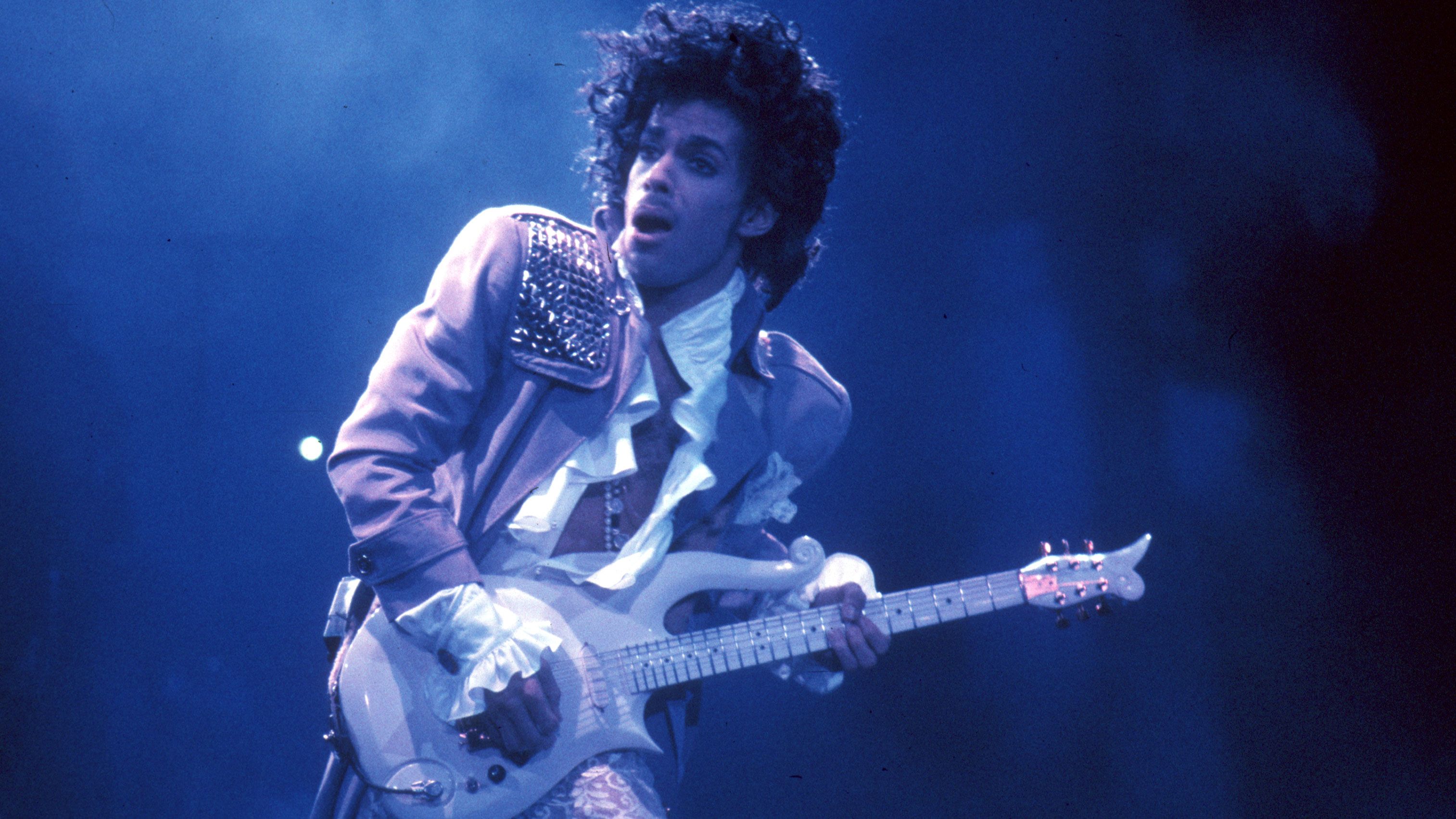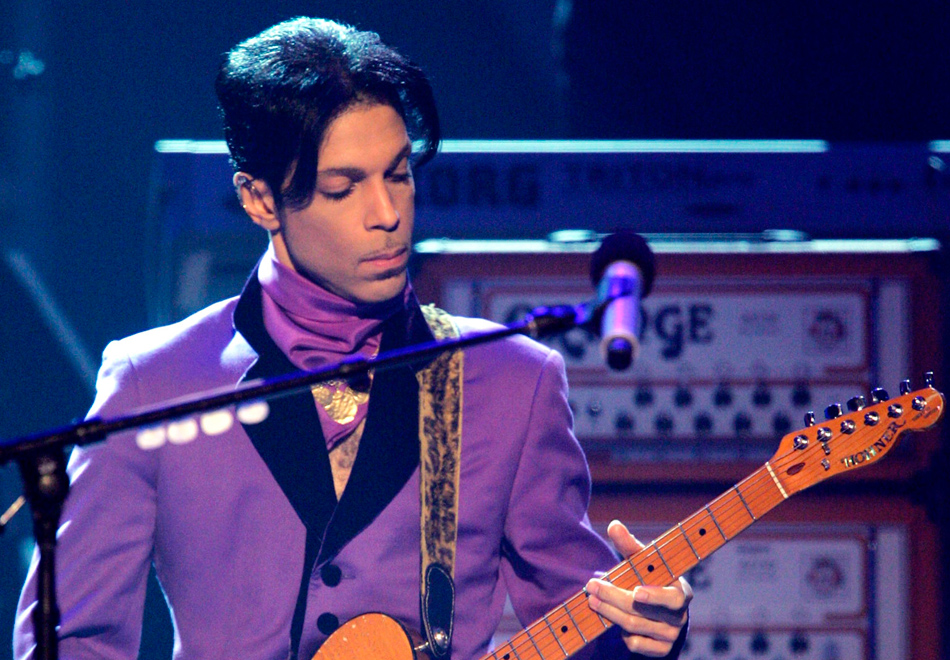
Prince Rogers Nelson, born June 7, 1958, departed too soon on April 21, 2016, leaving an indelible mark on music and culture. He was a force of nature, a singular artistic vision that transcended genres and defied categorization, rightfully hailed by Billboard magazine as “the greatest musical talent of his generation.” His influence continues to resonate, a testament to his unparalleled abilities and audacious spirit.
His persona was as flamboyant androgynous as it was deeply authentic, coupled with a vocal range that soared from a far-reaching falsetto to high-pitched screams. Beyond his captivating stage presence, Prince was a virtuoso multi-instrumentalist, often preferring to play all or most of the instruments on his recordings, a true testament to his comprehensive musical genius. His sonic tapestry incorporated a wide variety of styles including funk, disco, R&B, rock, new wave, soul, synth-pop, pop, jazz, blues, and hip hop, all self-produced, leading to the pioneering “Minneapolis sound.”
Today, we embark on a journey through the early chapters of his extraordinary life and career, exploring the pivotal moments that shaped the legend. From his humble beginnings in Minneapolis to the seismic cultural shift brought about by *Purple Rain*, we delve into the making of an artist who not only redefined music but reshaped the very fabric of popular culture, leaving an enduring legacy of innovation and defiance.

1. **Early Life and Musical Genesis** Born in Minneapolis, Prince’s destiny was arguably etched in his very name, inherited from his father, John Lewis Nelson, a pianist and songwriter who performed with Prince’s mother, jazz singer Mattie Della, in a group called the Prince Rogers Trio. His father explicitly stated in 1991 that he named his son “Prince” because he wanted Prince “to do everything I wanted to do,” a wish that would manifest in ways no one could have predicted. Despite this grand aspiration, the young Prince himself wasn’t fond of his given name, preferring to be called “Skipper” during his childhood, a name which stuck throughout his early years.
Music was an inescapable presence in the Nelson household. Both Prince and his younger sister, Tyka, born in 1960, developed a keen interest in music, actively encouraged by their father. Even at a tender age, Prince displayed an innate connection to the art form, writing his very first song, “Funk Machine,” on his father’s piano when he was just seven years old. These early moments underscored a prodigious talent that was destined for greatness.
His early life was not without its challenges and complexities. Prince revealed he was “born epileptic” and experienced seizures when he was young. A poignant anecdote from his youth recounts him telling his mother, “‘Mom, I’m not going to be sick anymore,’ and she said, ‘Why?’ and I said, ‘Because an angel told me so.'” These early experiences, coupled with the instability of his parents’ divorce when he was 10 and a fraught relationship with his stepfather, contributed to a restless spirit, often seeing him switch homes between his parents.
Yet, these formative years were also rich with diverse influences and opportunities. He attended Minneapolis’s Bryant Junior High, where he even helped test the original *The Oregon Trail* video game, and Central High School, where he engaged in football, basketball, and baseball. Crucially, he received classical ballet training at the Minnesota Dance Theatre through the Urban Arts Program of Minneapolis Public Schools, an experience that undoubtedly contributed to his later mesmerizing stage presence and his lifelong advocacy for dancers, famously using his wealth to save the failing Joffrey Ballet in Chicago during the 1990s. His musical talents were already evident, impressing songwriter and producer Jimmy Jam in 1973 with his early mastery of a wide range of instruments and his incredible work ethic.

2. **The Fledgling Artist and Warner Bros. Deal** The mid-1970s saw Prince begin to translate his raw talent into tangible musical projects. In 1975, Pepe Willie, the husband of Prince’s cousin Shauntel, formed the band 94 East, hiring André Cymone and Prince to record tracks. Willie wrote the songs, and Prince contributed guitar tracks and co-wrote the 94 East song, “Just Another Sucker,” showcasing his burgeoning songwriting prowess. These early recordings would later form the album *Minneapolis Genius – The Historic 1977 Recordings*.
By 1976, shortly after graduating from Central High School, Prince cut a demo tape with producer Chris Moon in Moon’s Minneapolis studio. Unable to secure a recording contract, Moon brought the tape to Owen Husney, a Minneapolis businessman, who immediately recognized Prince’s extraordinary potential. Husney signed the 19-year-old Prince to a management contract and helped him craft a new demo at Sound 80 Studios in Minneapolis.
This refined demo, packaged with a professional press kit produced at Husney’s ad agency, ignited significant interest from several major record companies, including Warner Bros. Records, A&M Records, and Columbia Records. In 1977, with Husney’s guidance, Prince signed a landmark recording contract with Warner Bros. Records. Crucially, the record company agreed to give Prince creative control for three albums and retain his publishing rights – a testament to his early artistic integrity and vision that would later become a point of contention.
Prince then relocated from Minneapolis to Sausalito, California, where his debut album, *For You*, was recorded at Record Plant Studios. Released on April 7, 1978, the album notes proudly declared that Prince wrote, produced, arranged, composed, and played all 27 instruments on the recording, with the exception of co-writing the lyrics for “Soft and Wet” with Moon. This debut, though costly, laid the groundwork for his prolific career, yielding “Soft and Wet,” which reached No. 12 on the Hot Soul Singles chart and No. 92 on the Billboard Hot 100, alongside “Just as Long as We’re Together,” hitting No. 91 on the Hot Soul Singles chart.

3. **Forging the Minneapolis Sound and Early Triumphs** In 1979, Prince assembled his first touring band, featuring André Cymone on bass, Dez Dickerson on guitar, Gayle Chapman and Doctor Fink on keyboards, and Bobby Z. on drums. While Warner Bros. executives, who attended their first show at the Capri Theater on January 5, 1979, initially felt the band needed more time to develop his music, their potential was undeniable. That October, Prince released his self-titled album, *Prince*, which climbed to No. 4 on the Billboard Top R&B/Black Albums charts and No. 22 on the Billboard 200, eventually achieving platinum status. It notably used Ecnirp Music – BMI for publishing.
This album spawned two significant R&B hits: “Why You Wanna Treat Me So Bad?” and the million-selling “I Wanna Be Your Lover,” which ascended to No. 11 on the Billboard Hot 100 and held the No. 1 spot on the Hot Soul Singles chart for two weeks. These early successes were just a prelude to the audacious artistry that would soon follow, with Prince performing both songs on *American Bandstand* on January 26, 1980, marking his arrival on the national stage.
1980 marked a pivotal shift with the release of *Dirty Mind*. This album fearlessly embraced sexually explicit material, featuring tracks like the title song, “Head,” and “Sister.” Stephen Thomas Erlewine aptly described it as a “stunning, audacious amalgam of funk, new wave, R&B, and pop, fueled by grinningly salacious sex and the desire to shock.” Recorded in Prince’s own studio, *Dirty Mind* achieved gold certification, and the single “Uptown” reached No. 5 on both the Billboard Dance chart and the Hot Soul Singles chart, cementing his reputation as a boundary-pushing innovator. He even opened for Rick James’ 1980 Fire It Up tour.
The momentum continued into 1981 with his first appearance on *Saturday Night Live*, performing “Partyup,” followed by the album *Controversy*. This release further showcased his evolving sound and distinct lyrical approach, also marking the introduction of Prince’s characteristic abbreviated spelling, such as using “U” for you, “2” for to, and “4” for for – a practice that would become a signature element of his presentation. While a contentious opening act for the Rolling Stones on their US tour saw him forced off stage by a hostile audience throwing trash, Prince forged ahead, forming the side project band The Time in the same year, contributing much of the instrumentation and backing vocals himself under pseudonyms like “Jamie Starr” or “The Starr Company.”

4. **The Double Album Triumph: *1999*** The year 1982 brought forth a masterpiece that would redefine Prince’s career and secure his place in the pantheon of music legends: the double album *1999*. This ambitious release sold over four million copies, establishing him as a global force. The title track, a potent protest against nuclear proliferation, became Prince’s first top 10 hit in countries outside the US, demonstrating his growing international appeal and willingness to tackle significant social themes through his music.
Crucially, *1999* played a pivotal role in breaking down racial barriers in music television. His iconic “Little Red Corvette” video, alongside Michael Jackson’s “Billie Jean,” was among the very first by Black artists to receive heavy rotation on MTV. This move came after CBS President Walter Yetnikoff threatened to pull all CBS videos from the network, challenging MTV’s perceived bias against “black music.” Prince’s impact in this arena cannot be overstated, helping to pave the way for future generations of artists and showcasing a competitive rivalry with Michael Jackson that lasted for many years.
Beyond “Little Red Corvette,” the album delivered another Billboard Hot 100 top ten hit with “Delirious.” The track “International Lover” earned Prince his first Grammy Award nomination at the 26th Annual Grammy Awards, signaling the industry’s burgeoning recognition of his undeniable talent and innovative songwriting. *1999* wasn’t just a commercial success; it was a cultural touchstone, a vibrant tapestry of funk, pop, and new wave that was both futuristic and deeply rooted in musical tradition, a true precursor to the heights he would soon reach.

5. **The Revolution: Band Formation and Evolution** During the transformative *1999* era and leading into his next major phase, Prince began referring to his backing band as The Revolution. This name, subtly printed in reverse inside the letter “I” of “Prince” on the *1999* album cover, symbolized a collective identity that was growing in prominence and influence alongside his solo artistry. The initial lineup was a powerhouse ensemble, featuring Lisa Coleman and Doctor Fink on keyboards, Bobby Z. on drums, Brown Mark on bass, and Dez Dickerson on guitar, with backing singer Jill Jones also contributing to the *1999* album and tour.
The band underwent a significant change following the *1999* Tour when Dez Dickerson departed, reportedly due to religious reasons and a reluctance to sign a long-term contract, as chronicled in Alex Hahn’s *Possessed: The Rise and Fall of Prince* (2003). His departure opened the door for Wendy Melvoin, Lisa Coleman’s friend, who stepped in to fill the role of guitarist. This addition would prove instrumental, as Wendy & Lisa became integral creative voices within the band, contributing significantly to its evolving sound.
Initially, The Revolution’s presence in the studio was sparse, with Prince often playing most instruments himself, a hallmark of his multi-instrumental prowess. However, this dynamic gradually shifted during 1983, as the band members began to contribute more substantially to the creative process. This evolution from a backing group to a more collaborative unit reflected Prince’s willingness to integrate diverse talents while still maintaining his singular artistic vision, harnessing collective energy to amplify his already formidable artistry.

6. **The *Purple Rain* Era: A Cultural Juggernaut** The year 1984 unleashed the full force of Prince’s artistic ambition and genius upon the world with the release of *Purple Rain*. According to his former manager Bob Cavallo, Prince had explicitly sought a deal to star in a major motion picture in the early 1980s, even though his exposure was then limited to several pop and R&B hits, music videos, and occasional TV performances – a testament to his expansive vision beyond music. This audacious move resulted in the hit film *Purple Rain*, a semi-autobiographical cinematic experience starring Prince himself, accompanied by its eponymous soundtrack album.
The *Purple Rain* album was an absolute phenomenon, selling more than 13 million copies in the US alone and dominating the US Billboard 200 chart for an astonishing 24 consecutive weeks at No. 1. The film itself was a resounding success, grossing more than $68 million in the US ($206 million in 2024 dollars) and earning Prince an Academy Award for Best Original Song Score. Critically, it has been lauded as “one of the greatest musical films,” cementing its place in cinematic history and solidifying Prince’s status as a multifaceted entertainer.
The singles from *Purple Rain* became instant global anthems. “When Doves Cry” and “Let’s Go Crazy” soared to No. 1 on the Billboard Hot 100, while the powerful title track reached No. 2. In an unprecedented feat, Prince became the first singer in 1984 to simultaneously hold the No. 1 spot for film, album, and single in the US, a testament to his singular, all-encompassing cultural impact. “When Doves Cry” notably became a signature song of Prince’s, an enduring classic.
The album’s enduring legacy is undeniable, ranking 8th in Rolling Stone’s “500 Greatest Albums of All Time” and featured on Time magazine’s “All-Time 100 Albums.” It also garnered Prince two of his initial three Grammy Awards: Best Rock Performance by a Duo or Group with Vocal and Best Score Soundtrack for Visual Media, earned at the 27th Annual Grammy Awards. The *Purple Rain* era was not just a commercial peak; it was a cultural watershed moment that fused rock, R&B, and pop with unparalleled charisma and artistic depth, redefining popular music for a generation.
The visual artistry of the *Purple Rain* era extended beyond film and music videos. Pop artist Andy Warhol, captivated by Prince, created the painting “Orange Prince” in 1984, one of twelve unique paintings. Warhol was fascinated by Prince, and *Vanity Fair* proclaimed, when publishing Warhol’s portrait to accompany their article “Purple Fame” by Tristan Fox, that the silkscreen image of Prince with its pop colors captured the recording artist “at the height of his powers.” This artistic cross-pollination underscored Prince’s burgeoning status as a cultural icon, influencing various artistic mediums at the start of his 98-date Purple Rain Tour.




